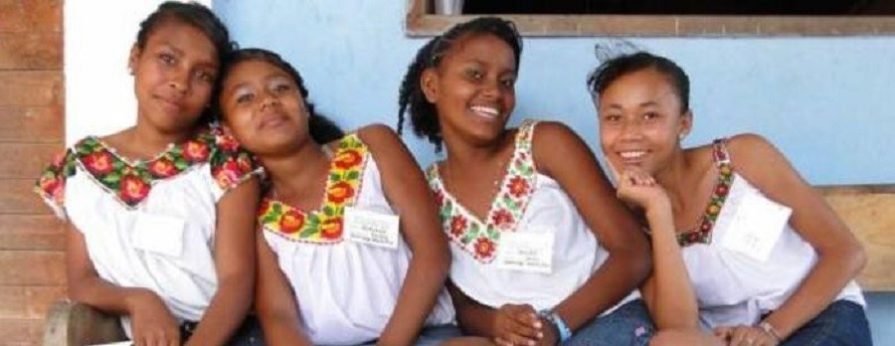Colombia, a mosaic of cultures and ethnicities, is often perceived through a lens that emphasizes its mestizo identity, overshadowing the rich contributions of its Afro-Colombian population. The question, “Are there Black people in Colombia?” elicits a profound inquiry into the nation’s historical tapestry and the complex interplay of race, culture, and social dynamics. This article seeks to explore Afro-Colombian culture through the framework of cultural relativism, while scrutinizing the historical and contemporary narratives that inform the Afro-Colombian identity.
Historically, Colombia has been significantly shaped by its African heritage, originating from the transatlantic slave trade that forcibly brought millions of Africans to the Americas. The population of enslaved individuals was integral to the development of various economic sectors, particularly in agriculture, mining, and the burgeoning sugar cane industry. Consequently, Afro-Colombian communities emerged primarily along the Pacific coast, in regions such as Chocó, Valle del Cauca, and Córdoba, where the African diaspora established cultural strongholds.
Cultural relativism allows us to view Afros-Colombian culture without the biases of our own frameworks. It engenders an appreciation for distinct cultural practices and social structures. Afro-Colombians have preserved a unique cultural identity, replete with traditions, music, dance, and language that reflect their African ancestry. Sampues, a traditional form of music, and the vibrant rhythms of cumbia and currulao exemplify the syncretic nature of Afro-Colombian artistic expression while also standing as a testament to resilience against historical adversity.
Music and dance serve as vital conduits for cultural transmission, community cohesion, and social commentary among Afro-Colombian people. The annual Festival of Black and White in Pasto epitomizes the exuberance of Afro-Colombian cultural heritage. This celebration fosters a sense of belonging and resilience among participants, who utilize various artistic expressions to reflect both historical narratives and contemporary experiences of marginalization.
Intersectionality plays a crucial role in understanding Afro-Colombian identity. As individuals navigate their position within society, they contend not only with racial but also spatial, linguistic, and economic dimensions of inequality. Marginalization often manifests in struggles for access to education, healthcare, and employment. This systemic exclusion serves as a reminder that while Afro-Colombians comprise a significant portion of the population, their representation and voice in societal discourse remain disproportionately limited.
Moreover, a deeper examination reveals that the enduring impacts of colonialism and slavery continue to influence contemporary socio-economic dynamics, particularly among Afro-Colombian populations. Land displacement, predominantly in coastal regions, has deprived communities of their traditional livelihoods. This dispossession exacerbates poverty rates among Afro-Colombians, creating a cycle of socioeconomic disenfranchisement that extends well beyond historical injustices.
The role of the Colombian government in recognizing and addressing the needs of Afro-Colombian communities has undergone gradual transformation. Legislative measures, such as Law 70 of 1993, aimed at recognizing and protecting the rights of Afro-Colombian population regarding land tenure and cultural preservation, reflect an increasing acknowledgment of Afro-Colombian contributions to national identity. However, implementation remains uneven, with socio-political barriers impeding meaningful change.
Education serves as both a battleground and a beacon of hope in the quest for social equity. The Afro-Colombian pursuit of educational empowerment has galvanized community initiatives geared toward preserving cultural knowledge while ameliorating socio-economic disparities. Bilingual education programs, which integrate Afro-Colombian history and Afro-Spanish languages, emerge as critical mechanisms for fostering a sense of pride and ownership among young Afro-Colombians.
The external perspective on Afro-Colombian culture is often marred by exoticization and stereotyping. While cultural tropes abound in popular media, they frequently fail to mirror the authentic experiences of Afro-Colombians, thereby perpetuating oversimplified narratives. These portrayals can obscure the dynamism of Afro-Colombian identities, which encompass a plurality of experiences that are shaped by geographic, historical, and social contexts.
Furthermore, diasporic connections strengthen the Afro-Colombian narrative at a global level. The transnational exchange of cultural practices, particularly in music and dance, enables Afro-Colombians to engage in dialogue with others of African descent worldwide. This communion fosters solidarity and collective action in addressing systemic issues rooted in racial discrimination and economic inequity.
Addressing the question of whether there are Black people in Colombia transcends superficial acknowledgment. It necessitates a profound exploration of the historical injustices, cultural contributions, and ongoing struggles for recognition faced by Afro-Colombians. By engaging with Afro-Colombian narratives through a lens of cultural relativism, we cultivate a deeper understanding of their complex identity.
As this exploration illustrates, Afro-Colombians embody a narrative of resilience and adaptation, rooted in rich traditions yet deeply enmeshed with contemporary socio-political realities. Their experience encapsulates the broader struggle against systemic inequities, shedding light on the enduring impacts of colonization and racial subjugation. As Colombia continues to evolve, recognition and respect for the multifaceted identities within its population will be essential for fostering inclusivity and cohesion in a society characterized by profound cultural richness.
